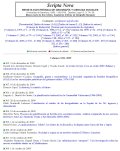El ensanche y la reforma de Ildefons Cerdà como instrumento urbanístico de referencia en la modernización urbana de Barcelona
Abstract
The urban modernization process of Barcelona evolved with the industrial revolution; the demolition of the town walls, which represented the identity of the old regime, together with the creation of a new city model that involved the restoration of the old town and Cerda’s gridded matrix. This jump on the urban transformation had been possible due to a series of changes that occurred in the previous decades, all with the 1854-1856 Progressive Biennial as a starting point and that materialized soon after with the demolition of the city walls and the first phase of the construction of the gridded city between 1859 and 1867. Cerda’s modernization is to be read under a frame of technological, social and administrative changes leaded by politicians and professionals and even the society in general Cerda’s contribution to these change came with his ‘Proyecto de Reforma y Ensanche de Barcelona’ (1959), which was an answer to the need for the construction of cities that would respond to new hygienic and transport targets, together with the tools that would materialize his project. In addition, Cerda prepared the ‘Teoría General de la Urbanización’ (1967), which has become the document of reference for a urban discipline and the generator of the element of the grid or ‘ensanche’ as the basis for the modernization of the spanish grids of the second half of the XIX century.Downloads
Published
2011-01-19
Issue
Section
Articles
License
Los autores que publican en esta revista están de acuerdo con los siguientes términos:
- Los autores conservan los derechos de autoría y otorgan a la revista el derecho de primera publicación, cin la obra disponible simultáneamente bajo una Licéncia de Atribución Compartir igual de Creative Commons que permite compartir la obra con terceros, siempre que estos reconozcan la autoría y la publicación inicial en esta revista.
- Los autores son libres de realizar acuerdos contractuales adicionales independientes para la distribución no exclusiva de la versió de la obra publicada en la revista (com por ejemplo la publicación en un repositorio institucional o en un libro), siempre que se reconozca la publicación inicial en esta revista.





